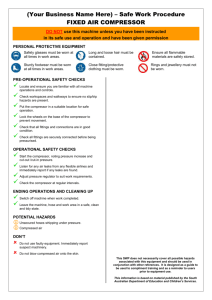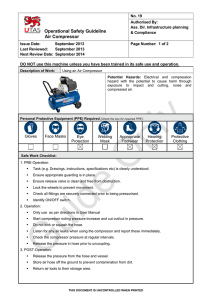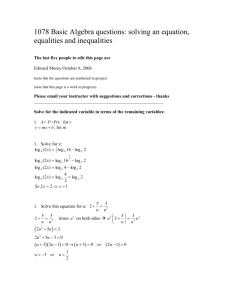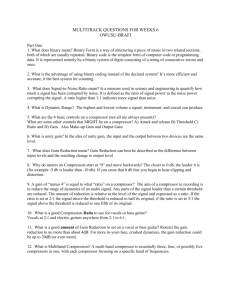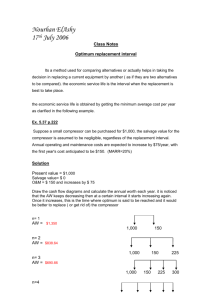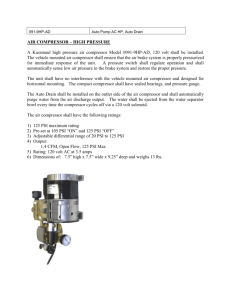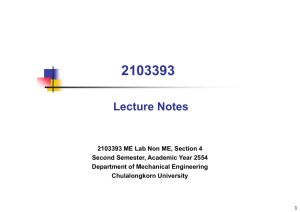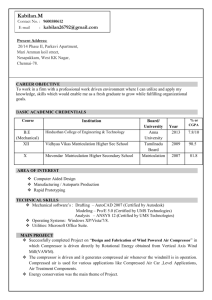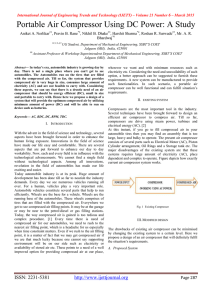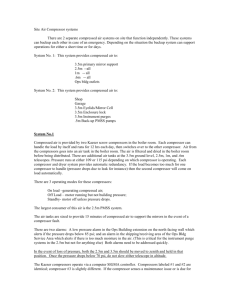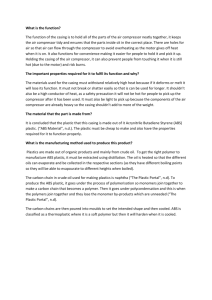Air Compressor Card
advertisement
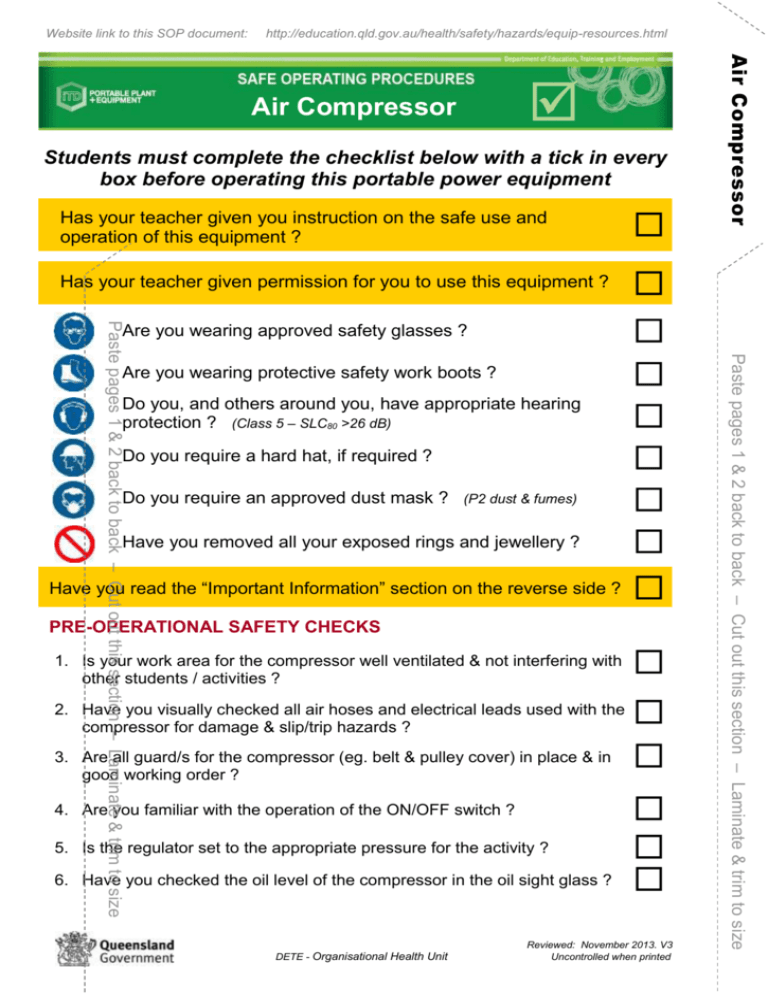
Website link to this SOP document: http://education.qld.gov.au/health/safety/hazards/equip-resources.html Students must complete the checklist below with a tick in every box before operating this portable power equipment Has your teacher given you instruction on the safe use and operation of this equipment ? Has your teacher given permission for you to use this equipment ? Are you wearing protective safety work boots ? Do you, and others around you, have appropriate hearing protection ? (Class 5 – SLC80 >26 dB) Do you require a hard hat, if required ? Do you require an approved dust mask ? (P2 dust & fumes) Have you removed all your exposed rings and jewellery ? Have you read the “Important Information” section on the reverse side ? PRE-OPERATIONAL SAFETY CHECKS 1. Is your work area for the compressor well ventilated & not interfering with other students / activities ? 2. Have you visually checked all air hoses and electrical leads used with the compressor for damage & slip/trip hazards ? 3. Are all guard/s for the compressor (eg. belt & pulley cover) in place & in good working order ? 4. Are you familiar with the operation of the ON/OFF switch ? 5. Is the regulator set to the appropriate pressure for the activity ? 6. Have you checked the oil level of the compressor in the oil sight glass ? DETE - Organisational Health Unit Reviewed: November 2013. V3 Uncontrolled when printed Paste pages 1 & 2 back to back – Cut out this section – Laminate & trim to size Paste pages 1 & 2 back to back – Cut out this section – Laminate & trim to size Are you wearing approved safety glasses ? Air Compressor Air Compressor Air Compressor Important Information – Read Before Use OPERATIONAL SAFETY CHECKS DO NOT use faulty equipment - Report this immediately to your teacher 1. 2. 3. 4. 5. 6. 7. Ensure all attachments used with the air compressor are in good condition before using. Be careful when attaching and disconnecting tools to the air hose. Hold the air hose and tool firmly during this process. Check the compressor at regular intervals noting pressure increase and cutout/cut-in pressure. Listen for any air leaks from any flexible airlines and immediately report if any leaks are observed. Adjust pressure regulator to suit work requirements – discuss with your teacher the correct setting required. Turn off and disconnect air hoses and electrical leads after use. Never leave air compressor and equipment unattended. NB. Use compressed air safely - Horseplay with compressed air can cause injuries HOUSEKEEPING 1. 2. 3. Leave the work area in a safe, clean & tidy state - remove any waste. Release condensation from drain before storing air compressor away. Air hoses and electrical leads should be coiled with large loops. POTENTIAL HAZARDS Compressed air Slips, trips & falls Material blown under pressure Excessive noise Unrestrained air hose whipping around High pressure air hose couplings Manual handling – equipment & materials FORBIDDEN Never use compressed air to clean off clothes, workbenches or floor surfaces. Never direct compressed air at your body or another person. Date of last review: ______________________________ Signature: DETE - Organisational Health Unit _________________________________ Reviewed: June 2013. V3 Uncontrolled when printed
